| Weight | 1 lbs |
|---|---|
| Dimensions | 9 × 5 × 2 in |
| host | mouse |
| isotype | IgG1 |
| clonality | monoclonal |
| concentration | concentrate, predilute |
| applications | IHC |
| reactivity | human |
| available size | 0.1 mL, 0.5 mL, 1 mL concentrated, 7 mL prediluted |
mouse anti-Cytokeratin 18 monoclonal antibody (ZM205) 6138
Price range: $160.00 through $528.00
Antibody summary
- Mouse monoclonal to Cytokeratin 18
- Suitable for: Immunohistochemistry (formalin-fixed, paraffin-embedded tissues)
- Reacts with: Human
- Isotype:IgG1
- Control: Breast carcinoma
- Visualization: Cytoplasmic
- 0.1, 0.5, 1.0 mL concentrated, 7 mL prediluted
mouse anti-Cytokeratin 18 monoclonal antibody ZM205 6138
| target relevance |
|---|
| Protein names Keratin, type I cytoskeletal 18 (Cell proliferation-inducing gene 46 protein) (Cytokeratin-18) (CK-18) (Keratin-18) (K18) |
| Gene names KRT18,KRT18 CYK18 PIG46 |
| Protein family Intermediate filament family |
| Mass 48058Da |
| Function FUNCTION: Involved in the uptake of thrombin-antithrombin complexes by hepatic cells (By similarity). When phosphorylated, plays a role in filament reorganization. Involved in the delivery of mutated CFTR to the plasma membrane. Together with KRT8, is involved in interleukin-6 (IL-6)-mediated barrier protection. {ECO:0000250, ECO:0000269|PubMed:15529338, ECO:0000269|PubMed:16424149, ECO:0000269|PubMed:17213200, ECO:0000269|PubMed:7523419, ECO:0000269|PubMed:8522591, ECO:0000269|PubMed:9298992, ECO:0000269|PubMed:9524113}. |
| Subellular location SUBCELLULAR LOCATION: Nucleus matrix {ECO:0000250|UniProtKB:Q5BJY9}. Cytoplasm, perinuclear region. Nucleus, nucleolus {ECO:0000269|PubMed:22002106}. Cytoplasm {ECO:0000250|UniProtKB:Q5BJY9}. |
| Tissues TISSUE SPECIFICITY: Expressed in colon, placenta, liver and very weakly in exocervix. Increased expression observed in lymph nodes of breast carcinoma. {ECO:0000269|PubMed:17213200, ECO:0000269|PubMed:2422083, ECO:0000269|PubMed:2434380, ECO:0000269|PubMed:2434381}. |
| Structure SUBUNIT: Heterotetramer of two type I and two type II keratins. KRT18 associates with KRT8 (PubMed:10852826, PubMed:24940650). Interacts with PLEC isoform 1C, when in a heterodimer with KRT8 (PubMed:24940650). Interacts with the thrombin-antithrombin complex (By similarity). Interacts with PNN and mutated CFTR. Interacts with YWHAE, YWHAH and YWHAZ only when phosphorylated. Interacts with DNAJB6, TCHP and TRADD. Interacts with FAM83H (PubMed:23902688). Interacts with EPPK1 (By similarity). Interacts with PKP1 and PKP2 (PubMed:10852826). {ECO:0000250, ECO:0000250|UniProtKB:P05784, ECO:0000269|PubMed:10809736, ECO:0000269|PubMed:10852826, ECO:0000269|PubMed:10954706, ECO:0000269|PubMed:11684708, ECO:0000269|PubMed:15529338, ECO:0000269|PubMed:15731013, ECO:0000269|PubMed:23902688, ECO:0000269|PubMed:24940650, ECO:0000269|PubMed:8609167, ECO:0000269|PubMed:9524113}.; SUBUNIT: (Microbial infection) Interacts with hepatitis C virus/HCV core protein. {ECO:0000269|PubMed:15846844}. |
| Post-translational modification PTM: Phosphorylation at Ser-34 increases during mitosis. Hyperphosphorylated at Ser-53 in diseased cirrhosis liver. Phosphorylation increases by IL-6. {ECO:0000269|PubMed:15368451, ECO:0000269|PubMed:16424149, ECO:0000269|PubMed:17213200, ECO:0000269|PubMed:7523419, ECO:0000269|PubMed:8609167, ECO:0000269|PubMed:9524113}.; PTM: Proteolytically cleaved by caspases during epithelial cell apoptosis. Cleavage occurs at Asp-238 by either caspase-3, caspase-6 or caspase-7. {ECO:0000269|PubMed:9298992}.; PTM: O-GlcNAcylation increases solubility, and decreases stability by inducing proteasomal degradation. |
| Involvement in disease DISEASE: Cirrhosis (CIRRH) [MIM:215600]: A liver disease characterized by severe panlobular liver-cell swelling with Mallory body formation, prominent pericellular fibrosis, and marked deposits of copper. Clinical features include abdomen swelling, jaundice and pulmonary hypertension. {ECO:0000269|PubMed:12724528, ECO:0000269|PubMed:9011570}. Note=The disease is caused by variants affecting the gene represented in this entry. |
| Target Relevance information above includes information from UniProt accession: P05783 |
| The UniProt Consortium |
Data
 |
| Human colon carcinoma stained with anti-keratin 18 antibody using peroxidase-conjugate and DAB chromogen. Note the cytoplasmic staining of tumor glands. |
Publications
| pmid | title | authors | citation |
|---|---|---|---|
| We haven't added any publications to our database yet. | |||
Protocols
| relevant to this product |
|---|
| IHC |
Documents
| # | SDS | Certificate | |
|---|---|---|---|
| Please enter your product and batch number here to retrieve product datasheet, SDS, and QC information. | |||
Only logged in customers who have purchased this product may leave a review.
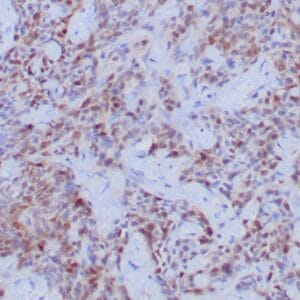
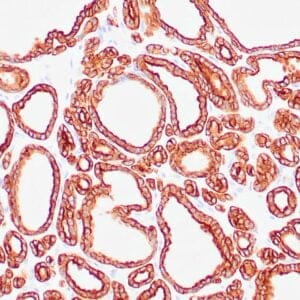
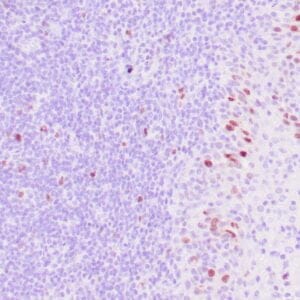
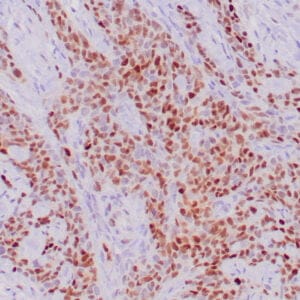
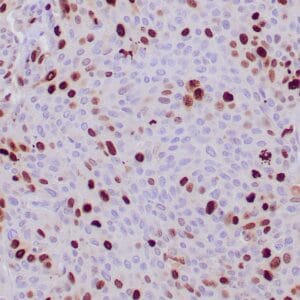
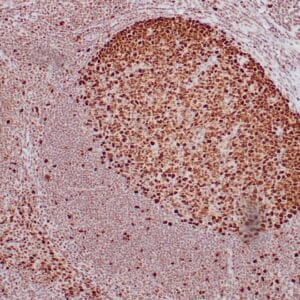
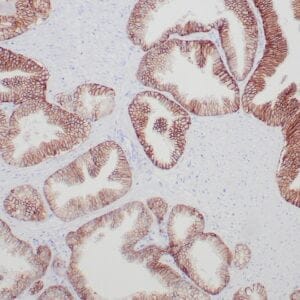
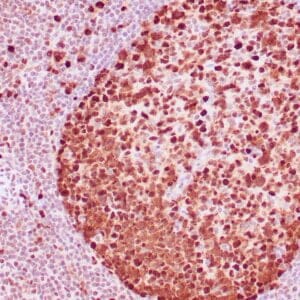
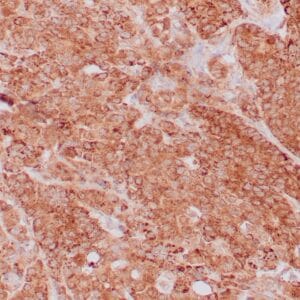
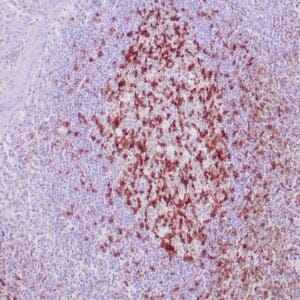
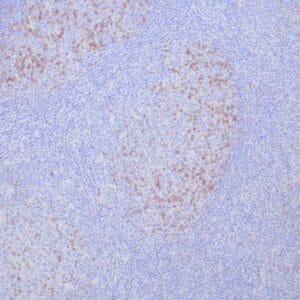
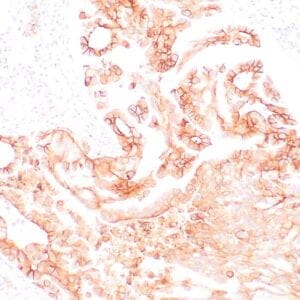
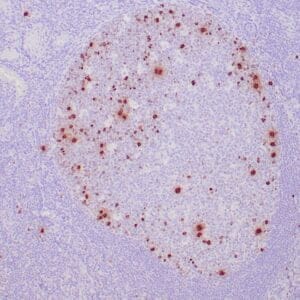
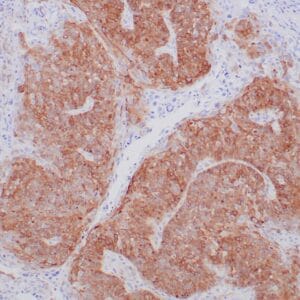
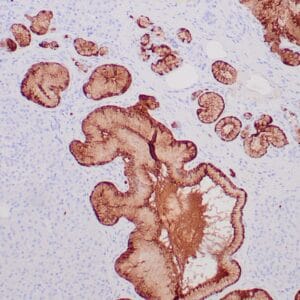
Reviews
There are no reviews yet.